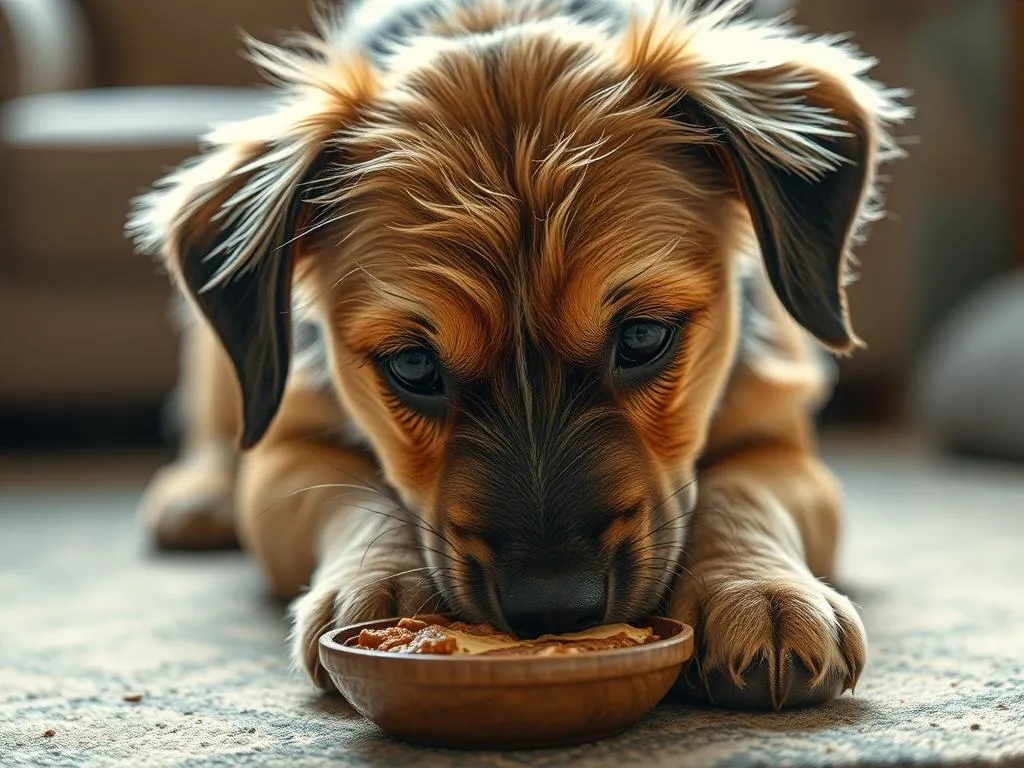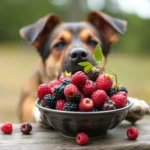
Introduction
Have you ever watched your dog while they eat and wondered, why does my dog play with their food? This curious behavior can leave pet owners perplexed, as they observe their furry friends pushing, pawing, and tossing their meals around rather than devouring them. Understanding this behavior is not only intriguing but also crucial for ensuring your canine companion’s health and well-being.
Proper dog nutrition is the cornerstone of a happy and healthy life for your pet. Just like humans, dogs require a balanced diet to thrive, and their eating habits can provide valuable insights into their nutritional needs. In this article, we will explore the phenomenon of dogs playing with their food, delve into the reasons behind this behavior, and discuss how it relates to their overall nutrition and health.
Understanding Canine Behavior
Overview of Canine Eating Habits
To comprehend why dogs may engage in playful antics with their food, it’s essential to first understand their natural instincts and behaviors. Dogs are descendants of wolves, which are natural scavengers. In the wild, their ancestors would hunt for food, often consuming their prey in a hurry to avoid losing it to other predators. This instinctual behavior still influences how many dogs approach their meals today.
Dogs have evolved to have a keen sense of smell and a playful demeanor, which can lead them to engage with their food in various ways. While some dogs may approach their meals with excitement, others may exhibit more playful behaviors, such as pushing their food around or tossing it up in the air.
Common Dog Behaviors During Mealtime
During mealtime, dogs typically exhibit a range of behaviors, including sniffing, chewing, and, of course, playing with their food. While these actions can be entirely normal, they may also vary significantly from one dog to another. For instance, some dogs might eagerly gobble up their food, while others might take their time, engaging in playful antics.
It’s crucial for pet owners to differentiate between normal behaviors and those that could indicate underlying issues. A dog that occasionally plays with their food might simply be engaging with their instincts, while a dog that consistently avoids eating or is overly aggressive with their food may require further investigation.
Reasons Dogs Play with Their Food
Instinctual Behaviors
One of the primary reasons dogs play with their food can be traced back to their instinctual behaviors. As descendants of hunters and foragers, dogs have inherited traits that encourage them to engage with their environment, including their food. This instinct manifests itself in various ways, such as sniffing, pawing, or even tossing their food around before finally eating it.
For many dogs, this behavior can be a form of play that mimics their ancestral hunting practices. By engaging with their food, they may be satisfying a primal urge to explore and manipulate their surroundings.
Attention-Seeking
Another common reason dogs might play with their food is to seek attention from their owners. Dogs are social animals and often look for ways to engage their humans. If a dog discovers that playing with their food gets a reaction from their owner—whether it’s laughter, a scolding, or even just a glance—they may continue this behavior as a way to garner attention.
Reinforcement plays a significant role in developing this behavior. If a dog learns that playing with their food results in more interaction with their owner, they may be inclined to repeat the action. This cycle can lead to a pattern where the dog associates mealtime with a playful interaction rather than focusing on eating.
Boredom and Lack of Stimulation
Boredom is another factor that can lead to dogs playing with their food. Dogs require both physical and mental stimulation to thrive. Without sufficient exercise or engaging activities, they may turn to their food as a source of entertainment.
To alleviate boredom, consider incorporating activities that challenge your dog mentally and physically. Puzzle toys, interactive games, and regular walks can help keep your dog engaged and reduce the likelihood of them playing with their food out of sheer boredom.
Food Texture and Temperature
The texture and temperature of the food can also influence how a dog interacts with their meals. Some dogs are more inclined to play with foods that are soft, squishy, or have an interesting texture. Conversely, a cold or hard food item might not elicit the same playful response.
For instance, dogs might enjoy playing with wet food more than dry kibble due to its malleability. Understanding your dog’s preferences can help you select foods that not only nourish but also engage them in a healthy way.
Nutritional Factors Influencing Behavior
Quality of Dog Food
The quality of dog food can significantly impact a dog’s eating behavior. High-quality dog foods are often formulated with better ingredients, which can lead to improved palatability. When dogs find their food more enjoyable, they are less likely to play with it and more likely to eat it promptly.
On the other hand, low-quality dog foods may not be as appealing, prompting dogs to engage with their meals in a more playful manner. This may stem from a lack of satisfaction or flavor in the food itself.
Feeding Schedule and Portions
Feeding schedules and portion sizes play a crucial role in a dog’s eating habits. Irregular feeding times or inappropriate portion sizes can lead to confusion during mealtime. If a dog is overly hungry or feels rushed, they may resort to playing with their food instead of eating.
To establish a balanced feeding routine, consider setting regular meal times and providing appropriate portion sizes based on your dog’s breed, age, and activity level. This structure can help your dog focus on eating rather than playing.
Flavor and Aroma
The flavors and aromas of dog food can significantly influence a dog’s interest in their meal. Dogs have a highly developed sense of smell, and they are often drawn to foods that have strong scents. If a dog’s food lacks aroma or flavor, they may be less inclined to eat it and more likely to engage in playful behavior.
Choosing high-quality, flavorful dog food that excites your dog’s palate can encourage them to focus on eating rather than playing.
When to Be Concerned
Signs of Stress or Anxiety
While playful behavior during mealtime is often harmless, it’s essential to be aware of signs that may indicate stress or anxiety related to food. If you notice your dog displaying aggressive behaviors, excessive whining, or refusal to eat altogether, it may signal a deeper issue that requires attention.
Identifying the difference between playful food interaction and distress is crucial. If your dog seems anxious or uncomfortable while eating, consider consulting with a veterinarian to address potential concerns.
Health Considerations
Certain health issues can also lead to changes in eating behavior, including playing with food. Dental problems, gastrointestinal discomfort, or underlying health conditions may prompt a dog to engage with their food differently.
If you observe excessive food play or any other concerning behaviors, it’s essential to seek veterinary advice. Early intervention can help address any potential health issues before they escalate.
Tips to Manage Food Play
Interactive Feeding Techniques
To encourage your dog to focus on eating rather than playing, consider incorporating interactive feeding techniques. Puzzle feeders or slow feeders can engage your dog mentally and physically while slowing down their eating pace. These tools turn mealtime into a fun and stimulating experience, reducing the likelihood of playful antics.
Training and Reinforcement
Training is another effective way to manage food play. Teaching your dog to focus on eating can be accomplished through positive reinforcement methods. When your dog eats calmly without playing, reward them with praise or a small treat. Consistency is key; over time, your dog will learn to associate mealtime with focused eating rather than play.
Enhancing the Feeding Environment
Creating a calm and distraction-free eating space can significantly impact your dog’s behavior during mealtime. Ensure that your dog has a quiet area to eat without interruptions from other pets or loud noises. Establishing a routine with regular feeding times can also help your dog feel more secure and focused during meals.
Conclusion
In summary, understanding why does my dog play with their food involves a combination of instinctual behaviors, attention-seeking tendencies, and environmental factors. By recognizing the various reasons behind this behavior, pet owners can take steps to ensure their dogs receive proper nutrition and maintain healthy eating habits.
Observing your dog during mealtime can provide valuable insights into their needs and preferences. By modifying feeding practices and providing appropriate stimulation, you can help your furry friend develop a more focused relationship with their food, promoting better health and happiness.
As you navigate your dog’s eating habits, remember that each dog is unique, and what works for one may not work for another. Stay attentive to your pet’s behavior and make adjustments as necessary to foster a positive and nutritious feeding experience.









